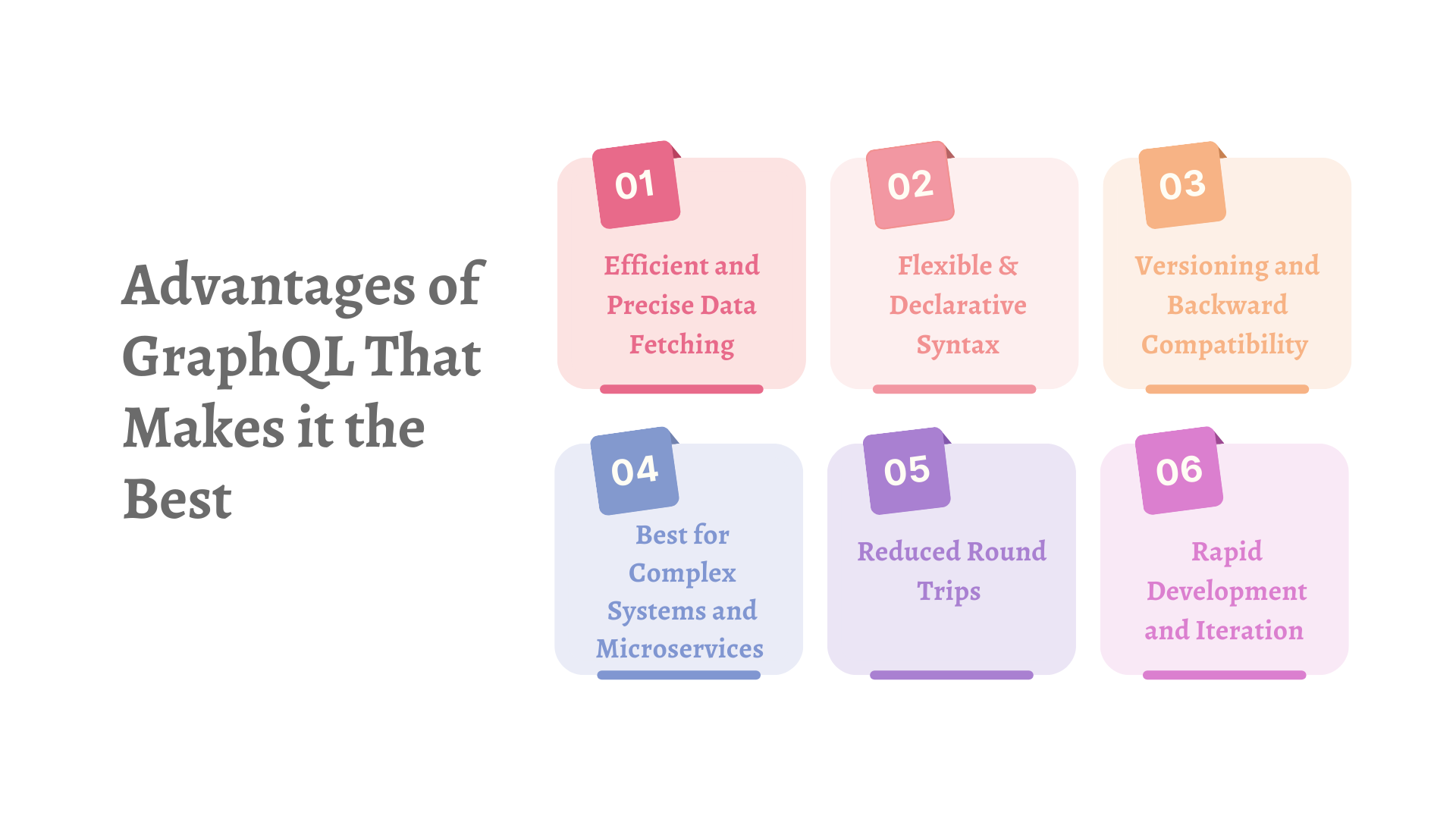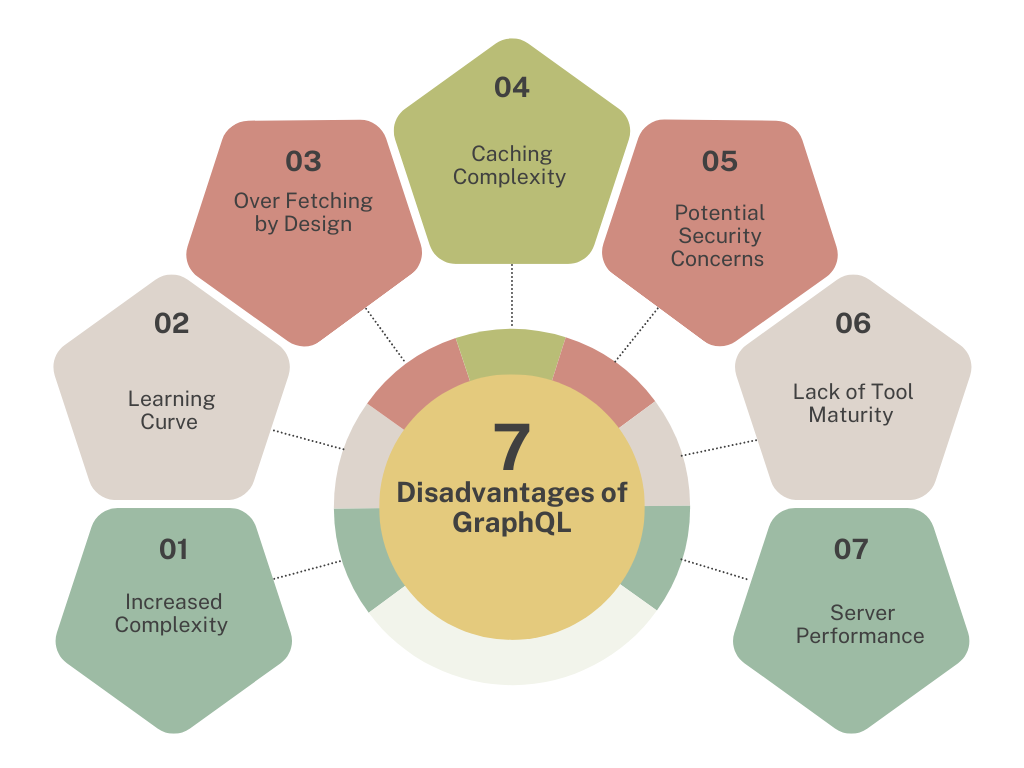So, which superhero flies into your mind to rescue you from this situation? GraphQL is the superhero of a query language that is designed to make your application development experience faster and much more efficient than ever and downright enjoyable. There are enormous benefits of using GraphQL that can make your business safe and better.
What is GraphQL?
Facebook created GraphQL, a query language and runtime for APIs (Application Programming Interfaces). It gives clients the ability to request and get just the data they need from a server in a single request, making it an appropriate alternative to conventional RESTful APIs.
GraphQL is mostly used for data processing and querying. Developers can describe the structure of the data accessible through the API using the schema definition language that is provided. A contract between the client and the server is formed by the schema, which specifies the kinds of objects and the connections between them.
Sounding Too technical?? Let me simply say it.
In Simple words, your team with the use of GraphQL can effortlessly request data with precision, as if they are ordering a Pizza with all your favorite toppings, and on the backend, the server responds with those specific ingredients they requested, neatly packed in a single response. Isn't it great!
In a world where every millisecond counts as a dollar, GraphQL swoops in to save the day. By reducing network round trips, batching requests, and allowing efficient data caching, GraphQL turbocharges the speed of your application, especially for mobile devices or low-bandwidth connections. So, it's time to bid goodbye to waiting for data to load and hello to instant gratification.
So, if you are craving efficiency, flexibility, and a touch of magic in your application development, journey, then strap on the cape and dive into the magnificent world of GraphQL. Unleash the power of fetching data which is very precise, effortless evolution, and unparalleled performance.
Common GraphQL Terms You Need to Know
1. Schema
You can describe a set of possible data you can query on that service and every GraphQL service defines this type. A GraphQL schema consists of object types, that define which kind of object can be requested and in which field it belongs.
2. Queries
GraphQL can either be a query or a mutation. The role of the query is to fetch the data.
3. Resolver
A resolver can connect GraphQL fields, graph edges, queries, etc with a key architectural component. These are also a collection of functionalities that are used to populate the data for a single field in your schema.
Advantages of GraphQL That Makes it the Best
Here are some of the benefits of using GraphQL that you should consider while deciding whether to use it or not:

1. Efficient and Precise Data Fetching
Clients can use GraphQL to precisely specify the data they require, and the server will provide that data in response to a single request. This addresses the over- and under-fetching problems that are sometimes present in RESTful APIs and cause clients to receive either more or fewer data than necessary. GraphQL increases application performance and network efficiency by eliminating wasteful data transport.
2. Flexible & Declarative Syntax
To specify data requirements, GraphQL employs a versatile and declarative syntax. Based on the shape of the data they anticipate receiving, clients can design their inquiries. As a result, complicated data structures with layered relationships can be easily requested by front-end developers. It is simpler to comprehend and update APIs over time because of GraphQL's schema-driven methodology.
3. Versioning and Backward Compatibility
When making updates to RESTful APIs, versioning the API is frequently necessary, which results in many versions operating concurrently and possible fragmentation. Versioning is not necessary with GraphQL because clients can request specific fields and explicitly state which version of the schema they are using. This permits the API to develop smoothly while ensuring backward compatibility. This is one the best benefits of using GraphQL to strengthen your business from this point of view.
4. Best for Complex Systems and Microservices
Behind GraphQL's API, different systems can be integrated. They become one and their intricacy is obscured. Data from the current systems are also fetched by the GraphQL server and packaged in the GraphQL response format. This helps legacy infrastructures and difficult-to-manage third-party APIs the most because of their size and complexity.
The GraphQL API can assist us in managing communication between numerous microservices by combining them into a single GraphQL schema when we need to transition from a monolithic backend application to a microservice architecture.
5. Reduced Round Trips
Multiple queries can be batch-processed and coalesced into a single round trip thanks to GraphQL. Clients can send many queries or mutations at once, and the server will return the results in turn. As a result, fewer network round trips are necessary to get data, which is especially advantageous for mobile devices with low bandwidth or slow connections.
6. Rapid Development and Iteration
Teams from the front end and backend can operate more autonomously because of GraphQL's declarative nature. Backend developers can upgrade the schema and data models without affecting current customers, while frontend developers can request the specific data, they need without necessitating backend changes. This decoupling quickens iterations, enhances collaboration, and speeds up product development.
Disadvantages of GraphQL that You Should Keep in Mind
1. Increased Complexity
When compared to conventional RESTful APIs, GraphQL adds a new level of complexity. Creating a schema, defining types, and answering queries are necessary steps in the construction of a GraphQL server. For developers who are new to GraphQL or have little expertise with schema-driven APIs, this complexity can be difficult.
2. Learning Curve
There is a learning curve with GraphQL, especially for developers used to RESTful APIs. It can take time and effort to comprehend the query syntax, schema definitions, and how to optimize data fetching. The steep learning curve at first could impede development, especially for teams switching from current RESTful frameworks.
3. Over Fetching by Design
Over-fetching is something that GraphQL seeks to prevent, yet it can unintentionally cause it. There is a possibility of asking for too much or too little data because clients must expressly request the data they require. When clients request large volumes of data in a single query, it might slow down the network and cost more money to send the data.

4. Caching Complexity
Comparing GraphQL to RESTful APIs, caching can be more difficult. Caching replies gets more difficult because GraphQL queries might be quite dynamic and ask for diverse combinations of information. The query form and parameters must be carefully considered, along with clever invalidation techniques, when implementing caching strategies.
5. Potential Security Concerns
If built incorrectly, GraphQL APIs are susceptible to several security concerns. For instance, malevolent customers may design queries that execute pricey processes or request a lot of data, resulting in denial-of-service attacks. Implementing suitable authentication, authorization, and rate-limiting techniques is necessary for securing GraphQL endpoints.
6. Lack of Tool Maturity
The tools ecosystem is still developing compared to the more developed ecosystem surrounding RESTful APIs, despite GraphQL's growing popularity. Finding thorough resources and community support for certain use cases might be difficult because some development tools, frameworks, and libraries may offer limited GraphQL support or documentation.
7. Server Performance
Complex query parsing, validation, and execution procedures must be managed by GraphQL servers. Performance problems with GraphQL servers could occur in some circumstances with deeply nested queries or slow resolvers. To achieve quick query execution and response times, data fetching, and resolver logic must be optimized.
So, this was an overview of the advantages and Disadvantages of GraphQL that will help you decide on which side to move.
GraphQL vs Rest API: A Quick Comparison
There are several differences between GraphQL and Rest API but here are some of them, that you should know.
Here is a glimpse of GraphQL Vs REST:
|
Focus Points |
GraphQL | Rest API |
| Data Fetching | GraphQL enables the clients to specify the exact data that they are in need of, in a single query, avoiding over-fetching or under-fetching of data. | The server defines the fixed endpoint, and client retrieve data by making HTTP requests to the endpoints. |
| Request Structure | Talking about GraphQL, it uses a single endpoint and leverages a flexible and declarative query language to specify the desired data structure. | Whereas Rest API specifically follows a resource-oriented approach, where these endpoints represent a definite resource and HTTP methods defining the action on the resources. |
| Versioning | Clients are allowed to request specific fields and explicitly reasoning the version of the schema they are using. | Rest API requires versioning when making changes to API’s structure, introducing new endpoints or modifying existing ones. |
| Development Experience | This simplifies development by allowing clients to recover their data in just a single request reducing the number of network calls and making it easier to manage the dependencies of the data. | Usually REST API requires multiple round trips to fetch related data, that can result in a more complicated and time-taking development process. |
| Caching | On contrary, GraphQL, with its fine-grained control over data fetching, requiring more customization of caching strategies. | REST API relies on HTTP aching at the server or client level. |
How Zenesys can Help?
Being in the industry, for now, more than a decennium, we lead the industry and are a well-known name. We have helped several brands with our technological expertise, providing them with solutions that are tailored to them.
We have GraphQL experts who are proficient enough to get you all the solutions to your issues. We have 200+ happy clientele. Be part of our list. We are a reliable partner that you can trust. We analyze the root cause of the issue, hover on the best ideas, and plan a strategy that can help resolve the issue in the best way possible. Post that we apply all the logic practically and run rigorous testing to make it just perfect.
Hire us and see the difference in your progress. We are there with you in deploying top-quality development and resolving issues using futuristic qualities like GraphQL.
Conclusion
GraphQL is a query language and runtime for APIs that was developed by Facebook. The technology is continuing to create a difference in the development process and make the data manifestation easy and smooth compared to any other API. So, there are endless benefits of using GraphQL to grow your business.
It is very essential to have a quality development partner to unlead the complete benefit of GraphQL. We are here to help you with top-quality assistance and development processes. So, what are you thinking? Say hello to futuristic technology and bid goodbye to imperfection.


.webp?lang=en-US&ext=.webp)

.webp?lang=en-US&ext=.webp)

